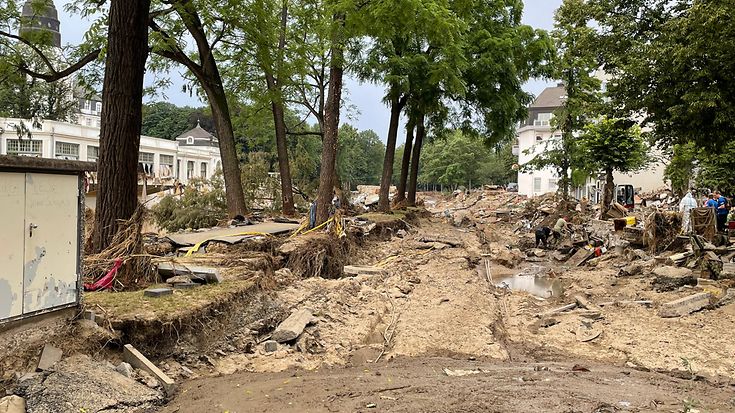Homeowners insurance in the future only with elemental protection module
Three months after the flood disaster in the Ahr Valley, German insurers presented concrete proposals for an overall concept to adapt to the consequences of climate change. This is also accompanied by a new system for natural hazards insurance coverage.

According to GDV's ideas, new buildings in designated flood plains should no longer receive insurance coverage for backwater, flooding and heavy rain.
Protecting all private residential buildings against extreme weather risks is at the heart of the concept, because so far, less than 50 percent of all buildings nationwide are insured.
In essence, the position paper envisages that in future there should only be residential building insurance policies that also cover so-called “natural hazards” such as floods and heavy rain. At the same time, the insurance industry is calling for a sustained change in public policy, for example through clear bans on building in flood-prone areas.
“Without consistent climate impact adaptation, our society will be forced to relive the dire impacts of devastating severe weather events over and over again. That cannot be our goal", says GDV CEO Jörg Asmussen .
New contracts only with natural hazards protection
With regard to the insurance coverage for the approximately 17 million private homeowners, the position paper proposes adding the elemental protection module to all existing policies in private residential building insurance. New contracts will also only be offered with natural hazards protection. Legislation would be needed for both.
“We cannot accept that one in two homes lacks insurance coverage against climate damage. That's why our overall concept includes, not least, risk-appropriate coverage for all new and existing buildings in private residential buildings insurance", Asmussen says.
The premium amount - both when taking out a new homeowners insurance policy with natural hazards protection and when converting existing policies - is to be based, as before, on the specific risk to a building from natural hazards. There are to be individual solutions for hardship cases, for example with the help of higher deductibles.
New buildings in risk zones no longer insurable against flooding
“In addition, we will examine all options with the new federal government and discuss ways to produce socially acceptable conditions for private homeowners in other hardship cases", Asmussen says.
According to the GDV concept, insurance customers will continue to have the option of opting out of natural hazards coverage when taking out or converting their policies. But they have to do it actively. With this "opt-out rule", insurers expect that homeowners will only opt out of natural hazards protection in exceptional cases in the future, if at all.
Furthermore, new buildings in officially designated floodplains will no longer receive insurance coverage for the risks of backwater, flooding and heavy rain after a certain cut-off date. “This is also an important signal to policymakers to stop approving new construction in high-risk areas", Asmussen explains.
Climate impact adaptation: More prevention needed
A further key element of the position paper is therefore clear demands on the federal, state and local governments to adapt to the consequences of climate change. "It is time to rethink the issue of climate change beyond the compulsory insurance debate in terms of an effective overall concept", Asmussen says. Legal changes and more prevention are necessary.
Among other things, insurers are calling for a legal ban on building in flood-prone areas, the anchoring of adaptation to climate change in building code law, and the establishment of a nationwide natural hazards portal. “Climate impact adaptation is no longer an abstract task of international conferences; it is a realistic scenario. That is why our country should now break new ground", Asmussen says.